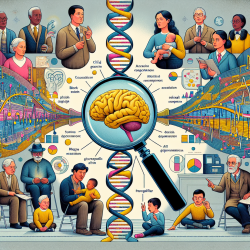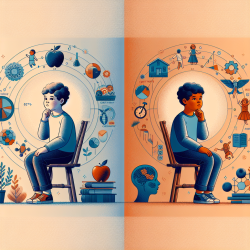Introduction
In the realm of speech-language pathology, understanding the intricate relationship between genetics and language can pave the way for innovative therapeutic approaches. A recent study titled Tone and genes: New cross-linguistic data and methods support the weak negative effect of the “derived” allele of ASPM on tone, but not of Microcephalin sheds light on how genetic variations may influence linguistic tone perception and processing. This blog explores the implications of these findings for practitioners aiming to enhance their skills and outcomes in child language development.
The Study's Findings
The research investigates the association between the population frequencies of "derived" alleles of two genes, ASPM and Microcephalin, and the presence of tone languages. The study utilizes a robust dataset and a variety of statistical methods to control for confounding factors such as genealogy and language contact. The findings suggest a weak negative effect of the ASPM allele on tone perception, while no significant effect was found for Microcephalin.
Implications for Practitioners
For speech-language pathologists, these findings underscore the importance of considering genetic factors in language acquisition and development. Here are some practical implications:
- Individualized Assessment: Recognize that genetic variations might contribute to individual differences in tone perception. Tailor assessments to account for potential genetic influences.
- Targeted Interventions: Develop interventions that consider genetic predispositions, especially in children from populations with varying frequencies of the ASPM allele.
- Further Research: Encourage further research to explore the mechanisms by which genetic factors influence language development, potentially leading to more effective therapeutic strategies.
Encouraging Further Research
While the study provides valuable insights, it also highlights the need for further exploration. Practitioners are encouraged to engage in research that examines the interaction between genetic predispositions and environmental factors in language development. Such research could lead to breakthroughs in understanding how to best support children with diverse linguistic needs.
Conclusion
Integrating genetic insights into speech-language pathology practice can enhance our understanding of language development and lead to more personalized and effective interventions. By staying informed about research like the study on ASPM and Microcephalin, practitioners can better support the linguistic growth of the children they serve.
To read the original research paper, please follow this link: Tone and genes: New cross-linguistic data and methods support the weak negative effect of the “derived” allele of ASPM on tone, but not of Microcephalin.










